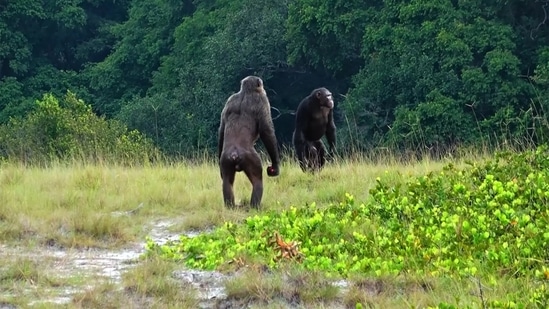In a first, Chimpanzees spotted killing gorillas in the wild
While intraspecies violence is a relatively common phenomenon in mammals, interspecies violence has mainly been investigated in the context of predation, according to the study.
Lethal attacks by Chimpanzees on gorillas in the wild have been observed for the first time, a team of researchers has said. The chimpanzees formed coalitions and attacked the gorillas at Loango National Park in Gabon in two encounters that lasted 52 and 79 minutes, according to the study, making it the first documented lethal coalitionary attacks by chimpanzees on another hominid species.

"At first, we only noticed screams of chimpanzees and thought we were observing a typical encounter between individuals of neighboring chimpanzee communities. But then, we heard chest beats, a display characteristic for gorillas, and realized that the chimpanzees had encountered a group of five gorillas," Lara M. Southern, the lead author of the study, said in a press release.
Two silverbacks and adult females defended the attack and were able to escape but two gorilla infants were separated and killed by the chimpanzees. While intraspecies violence is a relatively common phenomenon in mammals, interspecies violence has mainly been investigated in the context of predation, according to the study.
The authors suggested several explanations for the interspecies violence observed for the first time between chimpanzees and gorillas. Tobias Deschner, one of the co-authors, said that the increased competition among chimpanzees, gorillas and forest elephants over sharing of food resources could be the reason behind the lethal interaction. They said a scarcity of fruit in tropical forests in Gabon may have led to increased food competition.
"We are only at the beginning to understand the effects of competition on interactions between the two great ape species in Loango," says Simone Pika, another co-author. "Our study shows that there is still a lot to explore and discover about our closest living relatives, and that Loango National Park with its unique mosaic habitat is a unique place to do so."
The study conducted by the researchers from Osnabrück University and the Max Planck Institute for Evolutionary Anthropology in Leipzig, Germany, has been published in the journal Nature.






